Robert E. Lee was a central character in America's defining national trauma, the Civil War. These images explore other facets of his life, from the young boy coping with the abandonment of an admired but disgraced father, to the infirm and short-tempered general who carried the weight of Confederate hopes on his shoulders.
-
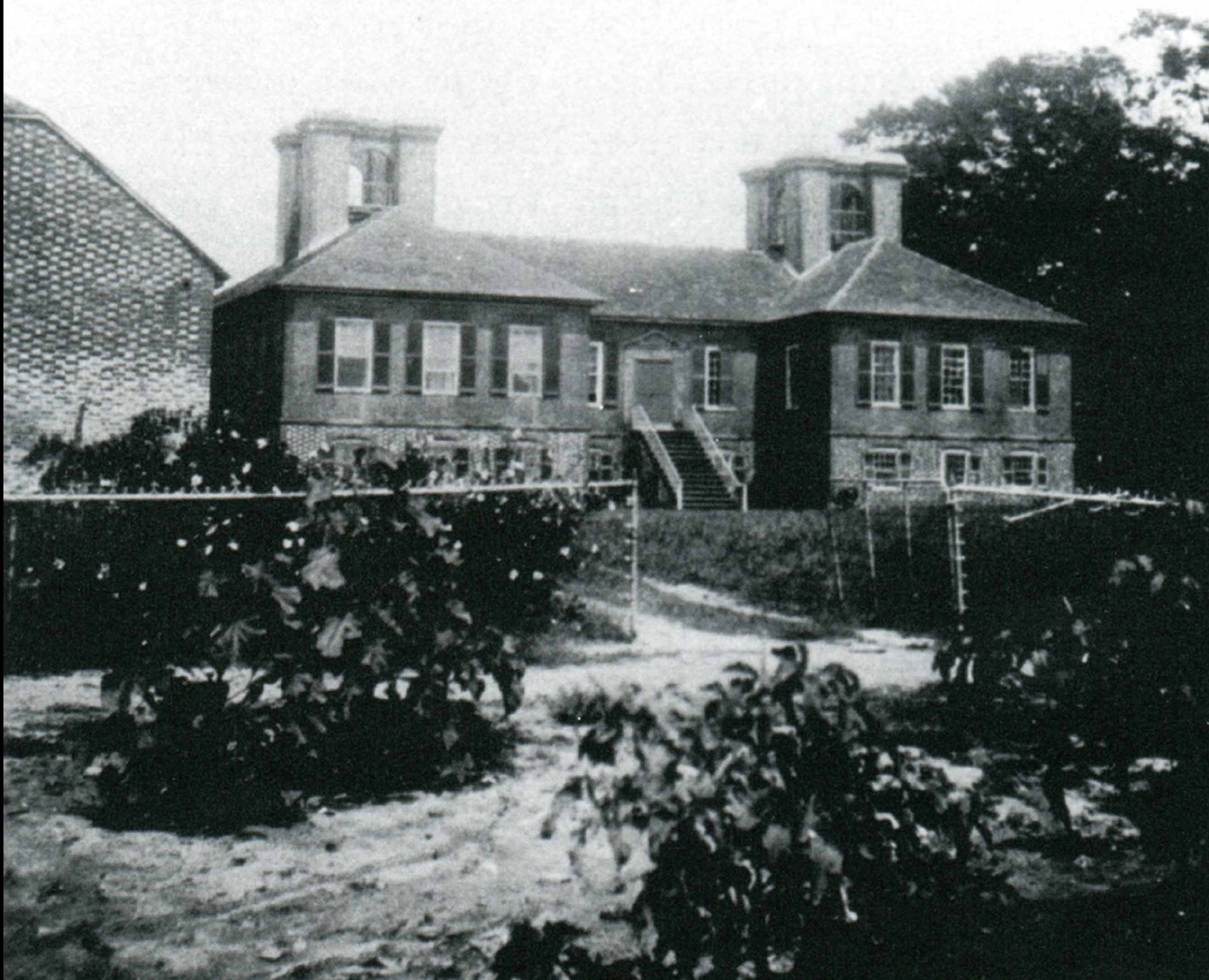
Robert E. Lee was born at Stratford Hall in Westmoreland County, VA. Because of Henry Lee's considerable debt, the Lees were forced to move away from Stratford when Robert was only three years old. The ancestral plantation would pass out of the family by the 1830s.
Credit: NARA -

Robert's father, Henry "Light Horse Harry" Lee, was a Revolutionary War hero. Light Horse Harry had risen to fame in the 1770s as a leader of a legion of light troops, and developed a friendship with George Washington. Financial difficulties landed him in debtor's prison, and when Robert E. was six, his father sailed off to the West Indies. He would die in 1818 while attempting to return home.
Credit: Independence National Historic Park -

The daughter of a wealthy Virginian planter, Anne Hill Carter Lee had both social and family ties to all seven Virginian signers of the Declaration of Independence. Rarely healthy, Anne was considered an invalid even before Robert's birth. The burden fell on Robert to care for his ailing mother until he left for West Point in 1825. Anne died shortly after his graduation from West Point at the age of 56.
Credit: Washington-Custis-Lee Collection, Washington and Lee University, Lexington, Virginia -

Robert E. Lee grew up and received his primary education in Alexandria, VA after Anne Hill Carter Lee moved her family to the Potts-Fitzhugh house in 1810.
Credit: Library of Congress -
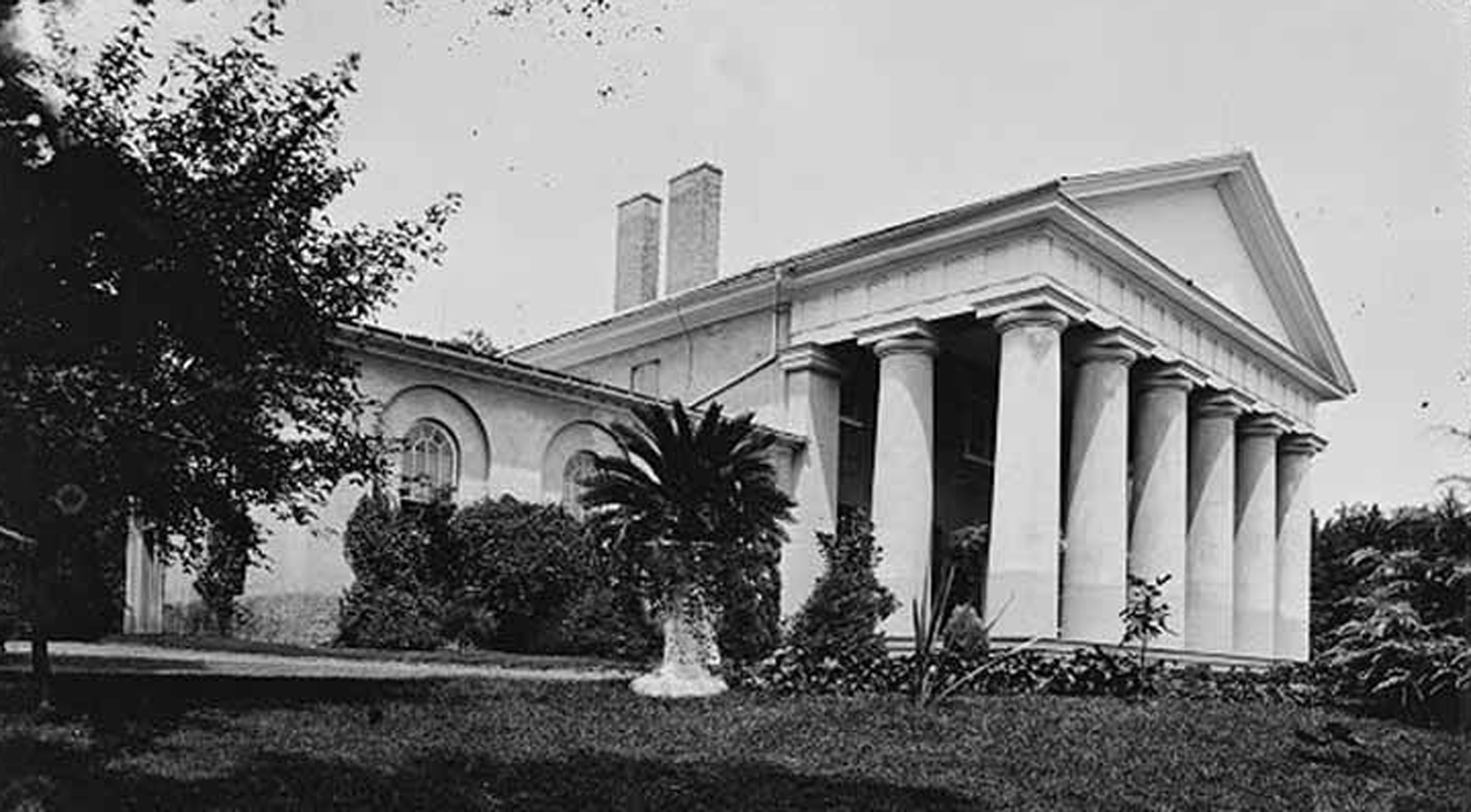
Built by Mary’s father in 1818, Arlington House was home to Robert and Mary from 1831 to 1864. It was taken over by Union forces in 1861 after a provision was made to seize and confiscate the property of persons engaged in armed rebellion against the United States, and in 1864 the property was officially turned into a national cemetery.
Credit: Library of Congress -
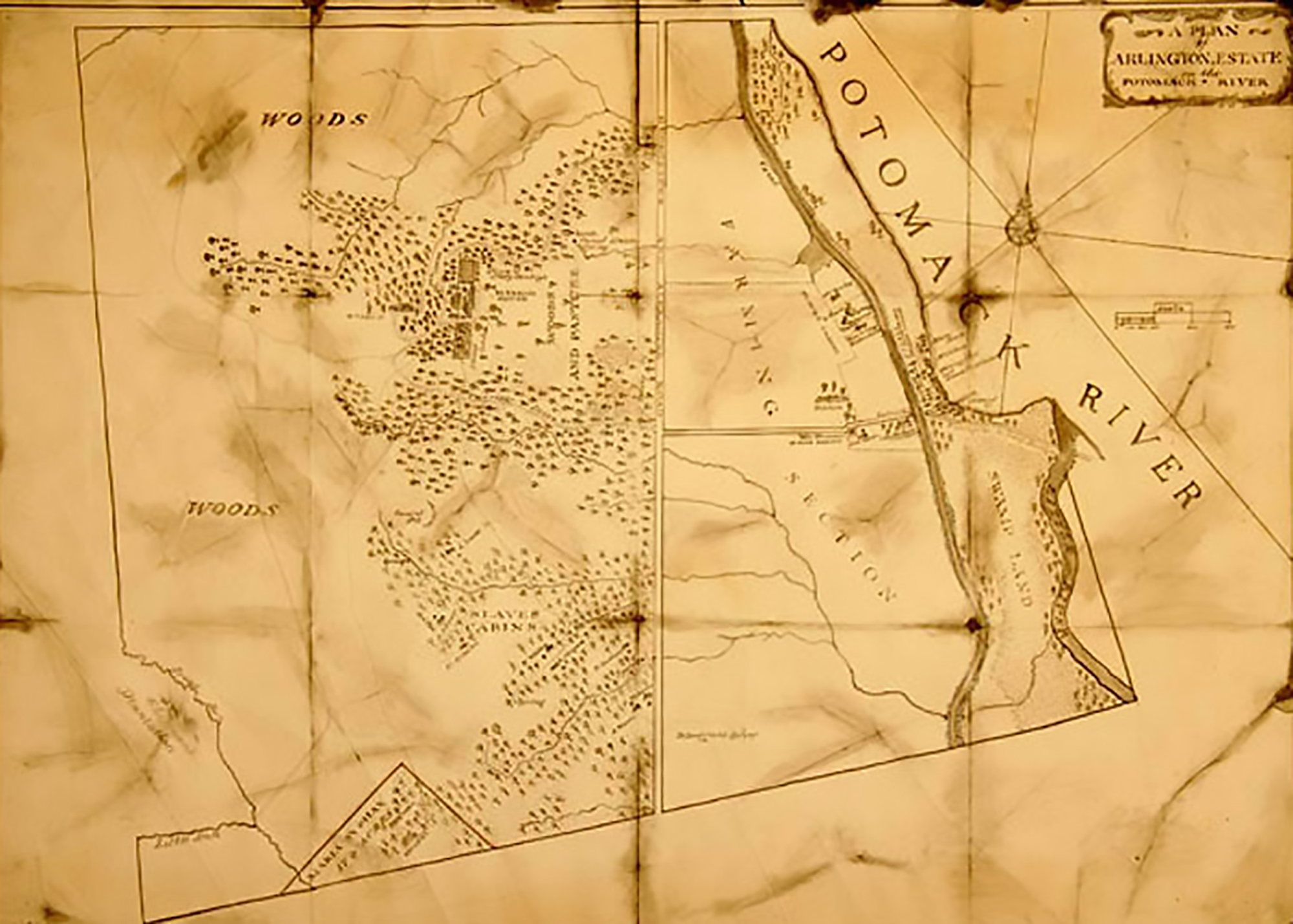
This map of Arlington Estate includes the mansion, chapel, slave cabins, Arlington Springs buildings, and slave cemetery.
Credit: Courtesy of Arlington House, the Robert E. Lee Memorial -

Lee's eldest son, George Washington Custis Lee, graduated first in his class from West Point and, like his father, began his career as an engineer. During the Civil War, he served as an aide to Jefferson Davis, but volunteered to take the place of his brother Rooney as a prisoner of war in 1863 to allow Rooney to be home with his sickly wife. This photograph depicts Lee as president of Washington and Lee University, which he served for 26 years.
Credit: Courtesy of Arlington House, the Robert E. Lee Memorial -

Mary Custis Lee, called "Sister", was the first of Robert E. Lee's four daughters. Slightly detached from life at Arlington, Sister never assumed household responsibilities or accompanied the family on holidays away from the estate. She never married, and she died in 1918 at the age of 83.
Credit: Courtesy of Arlington House, the Robert E. Lee Memorial -

William Henry Fitzhugh Lee, nicknamed "Rooney", was the second son of Robert E. and Mary Lee. Much adored as a child, Rooney entered Harvard in 1854 but dropped out to fight with General Winfield Scott in a campaign in 1858. Rooney fought in the Civil War under Confederate officer J.E.B. Stuart, and served eight months as a prisoner of war in Fort Lafayette, NY.
Credit: Courtesy of Arlington House, the Robert E. Lee Memorial -

The second daughter of Robert E. and Mary Lee, Anne Carter Lee was known to conduct Sunday school for the slave children at Arlington. In 1862, at the age of 23, Annie died of typhoid fever. Robert E. discovered the news of his daughter's death while on the battlefield.
Credit: Courtesy of Arlington House, the Robert E. Lee Memorial -

Eleanor Agnes Lee, Robert E. and Mary Lee's fifth child, went by "Agnes". As a child, she helped out at Arlington with the instruction of slaves and with renovations in 1855. Agnes was said to be melancholy and reserved after the Civil War, due in large part to the death of her suitor Orton A. Williams. Agnes never married and died from typhoid fever at the age of 32.
Credit: Courtesy of Arlington House, the Robert E. Lee Memorial -

Robert E. Lee Jr., the third son and sixth child of Robert E. and Mary Lee, graduated from the University of Virginia and served as an aide to his brother Custis during the Civil War. In 1904, Robert published his Recollections and Letters of General Lee, an account of his memories of his father and the daily life at Arlington house.
Credit: Courtesy of Arlington House, the Robert E. Lee Memorial -

The youngest daughter of Robert E. and Mary Lee, Mildred Childe Lee was called "Precious Life" by her father. She was closest to her brother Robert and to her father after he returned from the war. After her father's death in 1870, she traveled the world but never married. She died in New Orleans at the age of 45.
Credit: Courtesy of Arlington House, the Robert E. Lee Memorial -

Published in 1886, this print shows the Lee genealogy as a tree with complex set of branches and is decorated with vignettes of Stratford Hall and Lee Chapel and the surrounding buildings at Washington & Lee University.
Credit: Library of Congress -
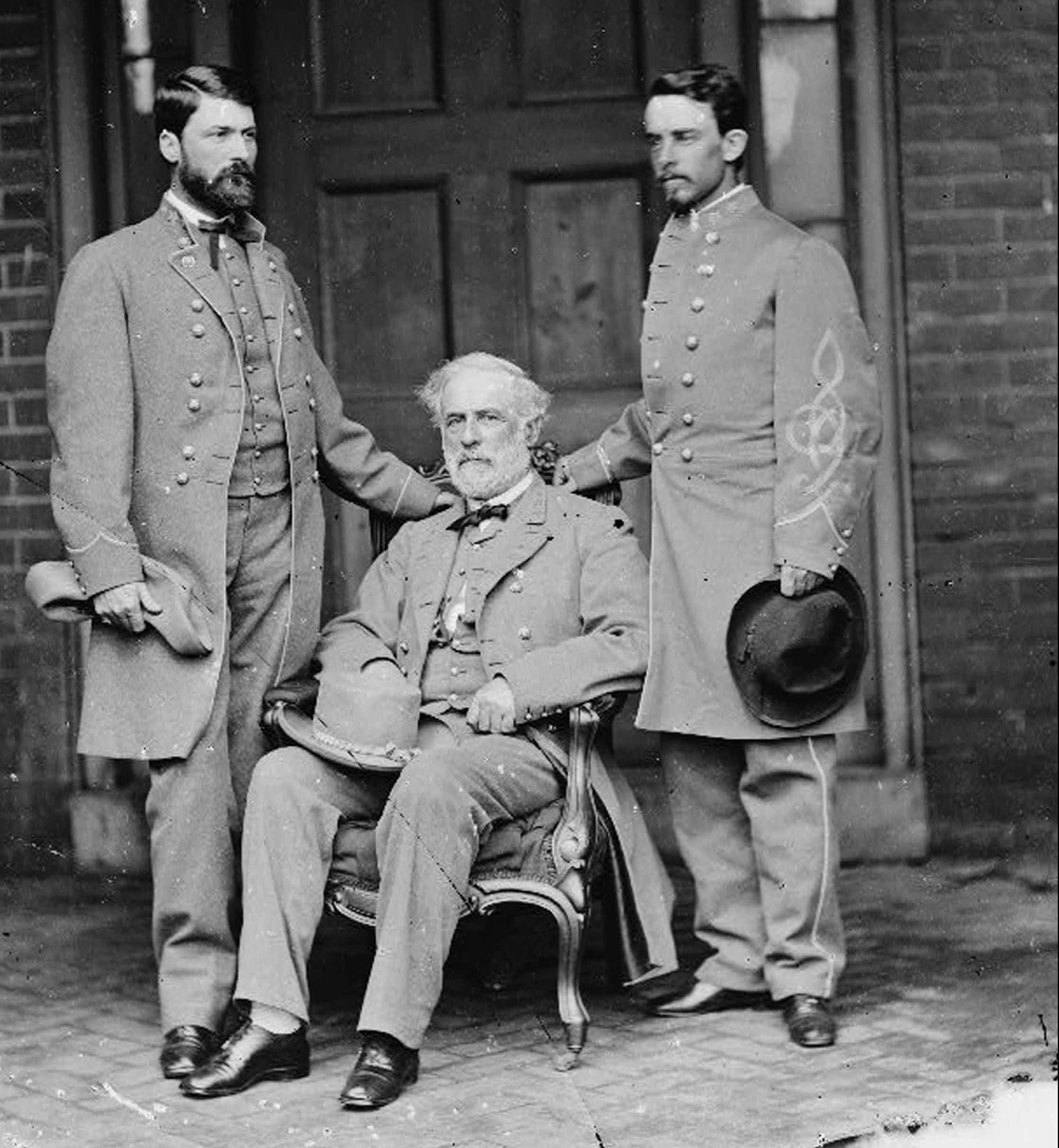
Gen. Robert E. Lee sits, flanked on either side by his son and advisor Colonel Walter Taylor. Lee's most trusted aid, Taylor joined Lee's staff in the spring of 1861 and stayed with him until Appomattox.
Credit: Library of Congress -

Lee bought his favorite horse Traveller, an American Saddlebred, in 1861 for $200. From this date on Lee would always be seen on battlefield or among his troops on the back of the 16 hand, 1,100 pound horse. During Lee's funeral procession, Traveller was led behind Lee's casket.
Credit: Library of Congress -
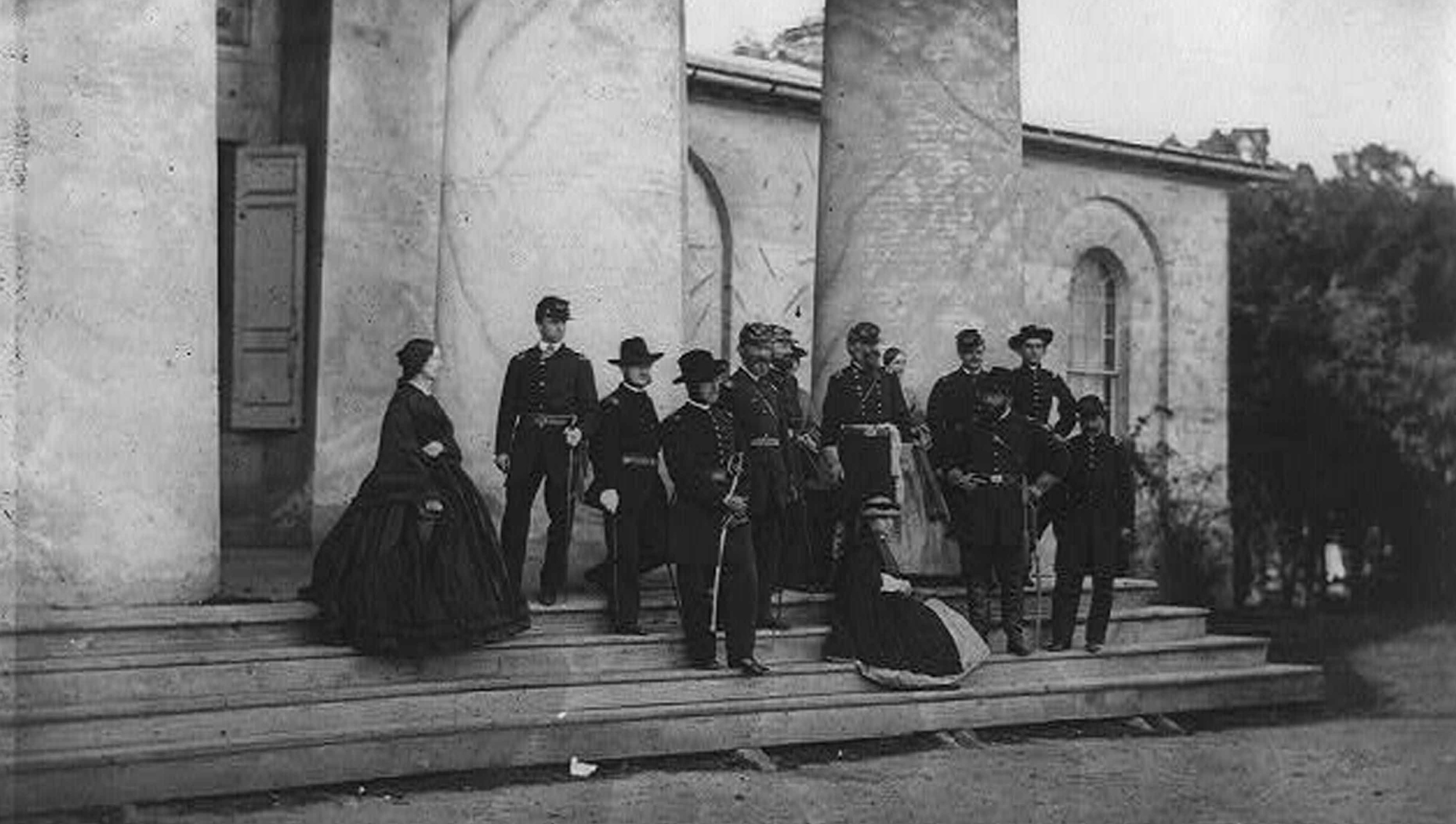
Union Gen. Samuel P. Heintzelman and staff with their families at Lee's former residence. Federal troops confiscated the property at Arlington on May 24, 1861, and began to built fortifications and military roads on the property. By the end of the year, the Union Army was using the house as military headquarters.
Credit: Library of Congress -

An inventory of Robert E. Lee's personal property at Arlington House. The list includes furniture, household accessories, prints and paintings.
Credit: NARA -

As fighting heightened in 1864, the number of dead soldiers overwhelmed Washington cemeteries. Quartermaster General Montgomery Meigs identified Arlington as an ideal place both geographically and symbolically, and the tomb for 2,111 unknown Civil War soldiers was erected in what was once Mrs. Lee's rose garden.
Credit: Library of Congress -

After the end of the war, Lee and his family lived at 707 East Franklin Street in Richmond, VA.
Credit: Library of Congress -
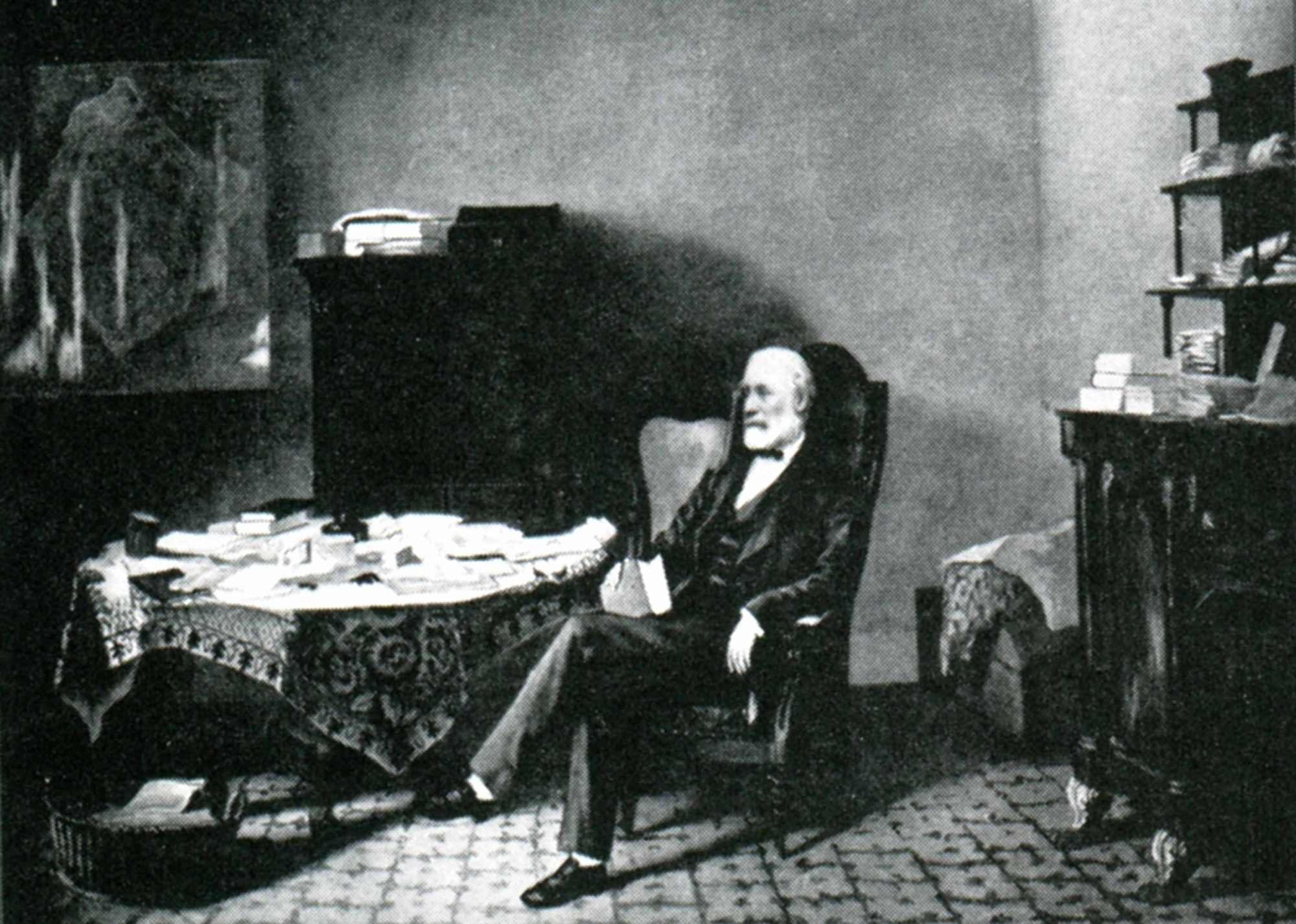
A lithograph of Robert E. Lee in his study at Washington College, where he served as president from 1865 until his death in 1870. Both Robert and Mary were in poor health during these years, suffering from heart problems and rheumatoid arthritis, respectively. Lee's study was located in the basement of the college chapel, and now houses the Lee family crypt, where Lee's remains are interred.
Credit: Library of Congress -

Lee died on October 12, 1870, two weeks after suffering a stroke. He was 63.
Credit: Library of Congress -

This print of Lee and Joseph E. Johnston was sold to raise funds for the Lee Monument in Richmond in 1870. The photograph was taken of Lee and Johnston fewer than six months before Lee's death. The meeting was the first meeting of the two generals since the end of the Civil War. The photograph remains an icon in Lost Cause imagery.
Credit: Library of Congress








